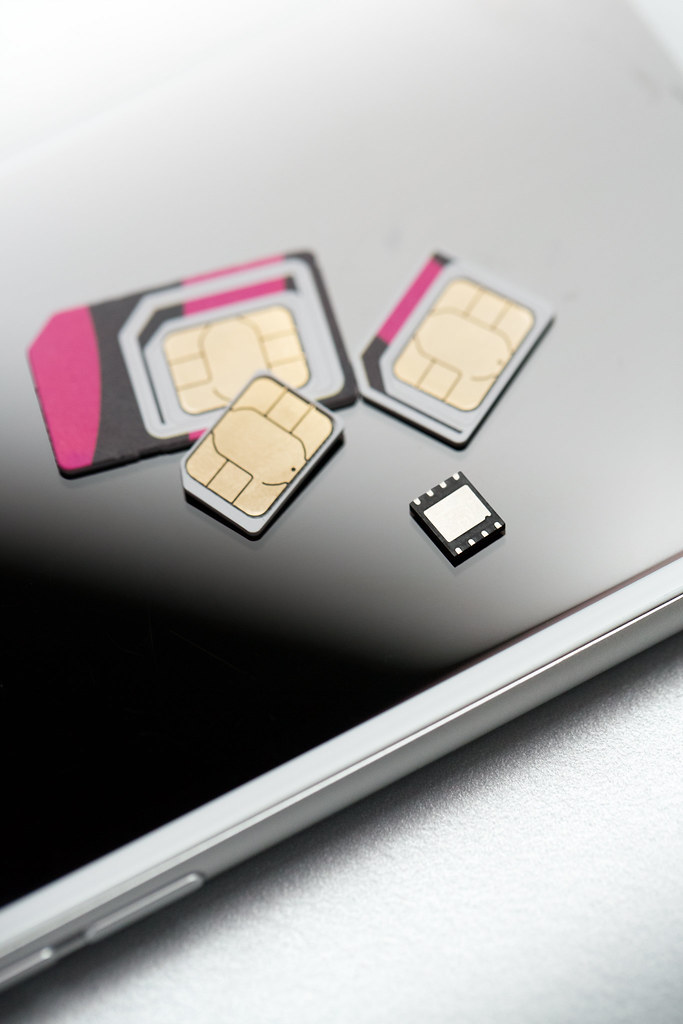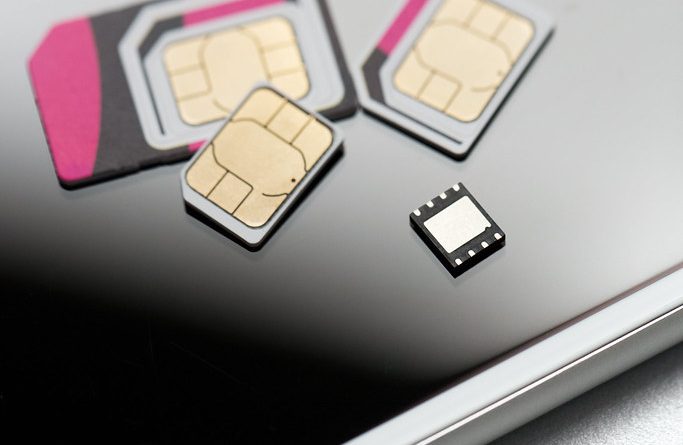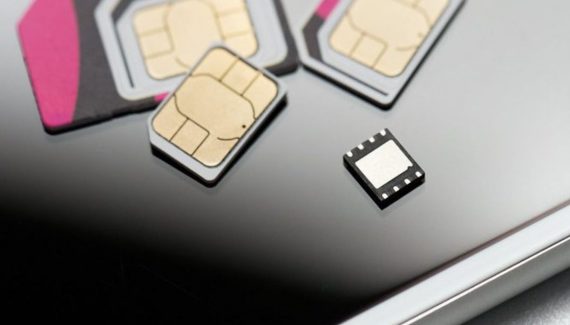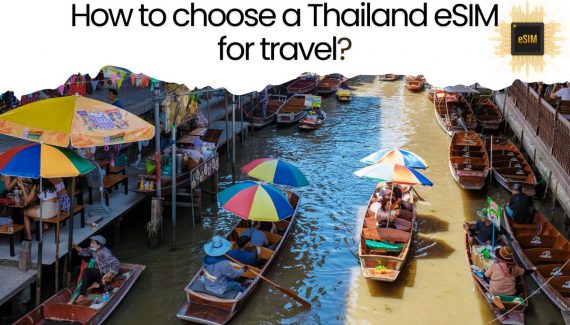If you’re planning a trip to Thailand and want to stay connected without the hassle of buying a local SIM card or dealing with international roaming charges, then an eSIM might be the perfect solution for you. In this article, we’ll go over everything you need to know about using an eSIM in Thailand as a tourist, including how it works, which mobile operators offer eSIM services, and the costs and benefits of using one.
What is an eSIM?
An eSIM, or embedded SIM, is a digital SIM card that’s built into your device rather than being a physical card that you can remove and replace. It stores all the information that a traditional SIM card would, such as your phone number and carrier details, but without the need for a physical card. This means that you can switch between carriers and plans without having to physically swap out your SIM card.

How does an eSIM work in Thailand?
Using an eSIM in Thailand is similar to using one anywhere else. Once you’ve purchased an eSIM from a mobile operator in Thailand, you’ll need to download a QR code or activation code to your device. You can then use this code to activate the eSIM on your device, and you’ll be ready to use it just like a regular SIM card.
What are the benefits of using an eSIM for tourists in Thailand?
There are several benefits to using an eSIM as a tourist in Thailand:
- Convenience: With an eSIM, you don’t need to worry about finding and purchasing a physical SIM card once you arrive in Thailand. Instead, you can simply purchase and activate an eSIM online before you leave home.
- Cost savings: Using an eSIM can be more cost-effective than using international roaming, which can be expensive. Purchasing a local eSIM plan in Thailand can help you save money on data and call costs.
- Flexibility: With an eSIM, you can switch between different mobile operators and plans without having to physically swap out your SIM card. This can be particularly useful if you’re traveling around Thailand and need to change carriers or plans.
How to get an eSIM for Thailand as a tourist?
To get an eSIM for Thailand as a tourist, you can follow these steps:
- Choose the right cellular network provider: There are three major network providers in Thailand, AIS, TrueMove H, and dtac, which offer eSIM services to tourists. Check their websites or visit one of their retail stores like thailandesim.com to see what plans they have available.
- Check your device compatibility: Not all devices support eSIMs, so check if your smartphone or tablet is compatible before arriving in Thailand. Most iPhones from the iPhone XS and later models, as well as select Android smartphones, will support eSIM.
- Purchase the eSIM plan: You can purchase an eSIM plan through the carrier’s website or retail store. Some carriers may require you to prepay for the plan before activating it. The prices and data allowances vary depending on the provider and plan.
- Activate the eSIM: Once you have purchased the eSIM plan, you will receive a QR code or activation code. Open the settings app on your device and go to “Mobile Data” > “Add Data Plan” (or similar option) and scan the QR code or enter the activation code to activate the eSIM.
- Verify the eSIM plan: Once activated, make sure that the eSIM is working properly by testing the internet speed and making a test call. If you encounter any issues, contact the carrier’s customer service for assistance.
It’s important to note that eSIM technology is still relatively new, and not all service providers in Thailand might offer it to tourists. Before purchasing an eSIM plan, confirm that it is valid for use in Thailand and that your device is compatible with the provider’s eSIM services. Additionally, make sure to keep a physical copy of your passport and visa as these documents may be required to activate the eSIM.
Which mobile operators in Thailand offer eSIM services?
Several mobile operators in Thailand now offer eSIM services for tourists. Some of the most popular options include:
- TrueMove H: One of the largest mobile operators in Thailand, TrueMove H offers eSIMs for tourists, with plans that include data, calls, and SMS.
- AIS: Another major mobile operator in Thailand, AIS also offers eSIM plans for tourists.
- dtac: A third option is dtac, which offers several eSIM plans with varying amounts of data and call minutes.
What are the costs of using an eSIM in Thailand for tourists?
The cost of using an eSIM in Thailand will depend on the mobile operator and plan you choose. Generally speaking, eSIM plans can be more affordable than traditional SIM card plans, but prices will vary based on the amount of data and call minutes you need. For example, a 7-day eSIM plan with TrueMove H costs around 599 baht (approximately $18 USD) and includes 7GB of data, as well as calls and SMS.
How to activate an eSIM in Thailand?
Activating an eSIM in Thailand is usually a simple process. Once you’ve purchased your eSIM plan online and downloaded the QR code or activation code, you’ll need to follow these steps:
- Open your device’s Settings app.
- Look for the option to add a cellular plan or SIM card.
- Choose the option to add an eSIM.
- Scan the QR code or enter the activation code.
- Follow the on-screen instructions to complete the activation process.
What are the requirements for using an eSIM in Thailand?
To use an eSIM in Thailand, you’ll need a few things:
- A device that supports eSIMs
- An eSIM plan from a mobile operator in Thailand
- An internet connection to download the QR code or activation code for the eSIM plan
Can I use my eSIM purchased in Thailand in other countries?
Whether or not you can use your eSIM purchased in Thailandin other countries will depend on the mobile operator and plan you choose. Some plans may allow for international roaming, while others may only be valid in Thailand. Make sure to check with your mobile operator before purchasing an eSIM plan if you plan on using it in other countries.
What are the limitations of using an eSIM in Thailand for tourists?
While there are many benefits to using an eSIM as a tourist in Thailand, there are also some limitations to keep in mind:
- Limited coverage: While the major mobile operators in Thailand offer good coverage in most parts of the country, there may be areas where you won’t have a signal.
- Device compatibility: Not all devices support eSIMs, so make sure to check whether your device is compatible before purchasing an eSIM plan.
- Activation process: The process of activating an eSIM can be more complicated than simply inserting a physical SIM card, so make sure to follow the instructions carefully.
Conclusion
Using an eSIM can be a convenient and cost-effective way for tourists to stay connected while traveling in Thailand. With several mobile operators now offering eSIM services, it’s easier than ever to purchase and activate an eSIM plan online before you even leave home. Just make sure to check the coverage, costs, and device compatibility before making your decision.


